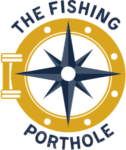

They are organisms that are carried by tides and currents – they drift where the currents take them
There are two key classifications of plankton: Phytoplankton (plants) and creatures sustained by these microscopic plants are Zooplankton (animals)
Capture the mineral wealth of water and use sunlight and nutrients to grow and “bloom”. Like plants on land, they photosynthesise – using the sun to draw in carbon dioxide and produce oxygen
Next in the food chain are zooplankton and filter feeding shellfish sustained by microscopic marine plants.
These microscopic animals range in species such as krill, pelagic worms and copepod; to young larvae juvenile stage of larger invertebrates and jellyfish. Lipid content is perhaps the most important attribute of copepods and krill – omega 3 fatty acids. From zooplankton next in the food chain are plankton feeding fish like herring, mackerel
Source: What are phytoplankton? (noaa.gov)
Plankton are very sensitive to changes in the ocean climate, such as ocean acidification and rising sea temperatures. Zooplankton eats phytoplankton, so they are just as sensitive to changes in the ocean environment. Therefore, shifts in phytoplankton abundance can be seen to affect the marine food chain and is why we continuously monitor ocean changes through the Continuous Plankton Recorder (CPR) Survey | CPR Survey